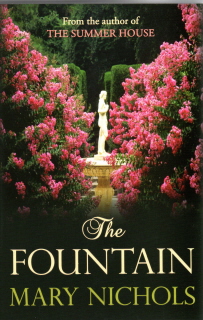- Farewell
- Introduction
- All Mary's Books
- Coming Soon
- More about Mary Nichols
- Links
- Search
- Contact Me
- Acknowledgments
- Blogs
- Most recent blogs
- Archive
- 2014
- 2013
- Building family anecdotes into a novel
- Collective Noun for a group of Romantic Novelists
- Village Brickmaking
- Writing Historical Novels for Mills & Boon
- Plot and Character in Historical novels
- Norfolk roots
- Developing that first Idea
- A Weekend to Remember
- Writing and Selling historical novels
- Using the Second World War as a setting
- What makes a good novel
- Doing the Research
- Spring in the Garden
- Historical novels: getting the setting right
- Writing Novels set against an historical background
- Mothers' Day
- Romantic Novelists' Association Annual Awards
- Shortlisted
- Do you need to be a historian to write historical novels
- 2012
Plot and Character in Historical Novels
Mon, 07/10/2013 - 15:12 — Mary
This is the seventh of my blogs forwww. writinghistoricalnovels.com put together by Steve Rossiter.
 A good plot and believable characters are a must for any book, no less for the historical novel than any other, perhaps especially for the historical because the temptation to concentrate on the history to the detriment of the story must be overcome. Readers don’t want a history lesson, they want a good story and if, in the process, they learn something new of times past, that is all to the good.
A good plot and believable characters are a must for any book, no less for the historical novel than any other, perhaps especially for the historical because the temptation to concentrate on the history to the detriment of the story must be overcome. Readers don’t want a history lesson, they want a good story and if, in the process, they learn something new of times past, that is all to the good.
Once I have decided on my theme, I make a careful plan of where the story is going, write biographical notes of all the important characters, their names, physical characteristics, their character traits, their motivation, the chronology of events, both real and imagined. Slotting the two together is where the research comes in. By the time I am halfway through writing the book, something happens that I haven’t allowed for and I have to think again. About three quarters of the way through I’m so far into the story that it takes over. But without that original plan to get me started, I’d be lost.
For me, the characters, their actions and reactions are what drives the story. The reader needs to be with them all the way, to identify with their problems, sympathise when they are down, share their joy when they are up, worry with them when fate turns against them, celebrate when things go right, feel their emotions with them. Even the bad characters. I don’t have really wicked characters in my books because I like to explore the reasons why they are bad and perhaps find some redeeming feature. If what is happening to my characters is emotionally challenging, then this, I hope, comes over in my writing. The reader needs to believe that these are real people, acting and speaking as real people would, even if they find themselves in extraordinary situations. Characters do not need to come to the book fully rounded, but grow and develop as the story progresses, so that at the end they have been subtly, or perhaps not-so-subtly, changed by their experiences.
But in developing characters, the fact that the book is historical needs to be borne in mind. How people acted and reacted to a given situation might be very different in your chosen era from the way they might react in today’s world. You cannot put modern values in the heads of people of two hundred years ago, (unless the whole thing is a spoof). What you want your characters to go through and how you want them to behave, might very well influence your decision about the era you want to set the book in.
For instance, I set THE FOUNTAIN between the two world wars. George Kennett is a young man determined to make his mark in the East Anglian town in which he lives and is not above a bit of skulduggery to achieve it. He is a builder and breaks all the rules of ethical behaviour, secretly setting up rival companies in order to get Council contracts and destroying genuine rivals. It couldn’t happen in today’s world with all the safeguards we now have or, if it did, would soon be exposed. His wife, Barbara, is a talented artist whose talent and personality is being quashed by her domineering husband. She is expected to collude in his nefarious dealings. That too, is unlikely to happen nowadays; no woman worth her salt would comply. Barbara might, by modern standards, seem weak, but she was a woman of her time, and she does eventually rebel. It could not have been set any later, when women became more independent. Any earlier and I would have missed out on the frenzy of building after WW1 to provide ‘homes fit for heroes’. It really could not have been set in any other time.
